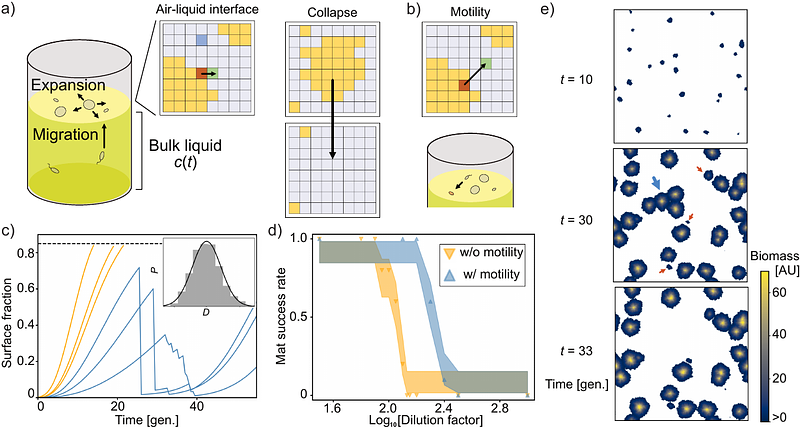Context-Dependent Adaptation in Structured Environments

Context-Dependent Adaptation in Structured Environments
Karita, Y.; Rodriguez-Sanchez, G. T.; Brambilla, E.; Hernandez-Beltran, J. C. R.; Schwarz, M.; Rainey, P. B.
AbstractAdaptive evolution often leads to niche specialization, but successful colonization of a new niche can depend as much on ecological context as on genetic change. This is especially true in spatially structured environments, where the physical construction of habitat and the order of arrival of mutants can shape evolutionary outcomes. In static broth cultures, the air-liquid interface (ALI) provides a high-oxygen niche typically colonized by mat-forming mutants. In Pseudomonas fluorescens, a range of single mutations that upregulate cellulose production give rise to \"wrinkly spreader\" (WS) types, canonical niche specialists that out-compete ancestral types at the ALI. Yet we discover that this is a half-truth: WS mutants frequently fail to establish when introduced alone at low density, but co-culture with ancestral types rescues colonization. Microscopy and model simulations show that ancestors physically scaffold the ALI, enabling stable attachment and facilitating the in situ emergence of an array of genetically diverse WS mutants. Ancestors later disperse, vacate the niche and allow WS mutant expansion. This transient asymmetric interaction reveals that even strongly adaptive mutations may require ecological facilitation to succeed. More broadly, our findings challenge simple narratives of adaptive replacement and underscore how transient ecological dependencies can shape the trajectory of evolutionary change.